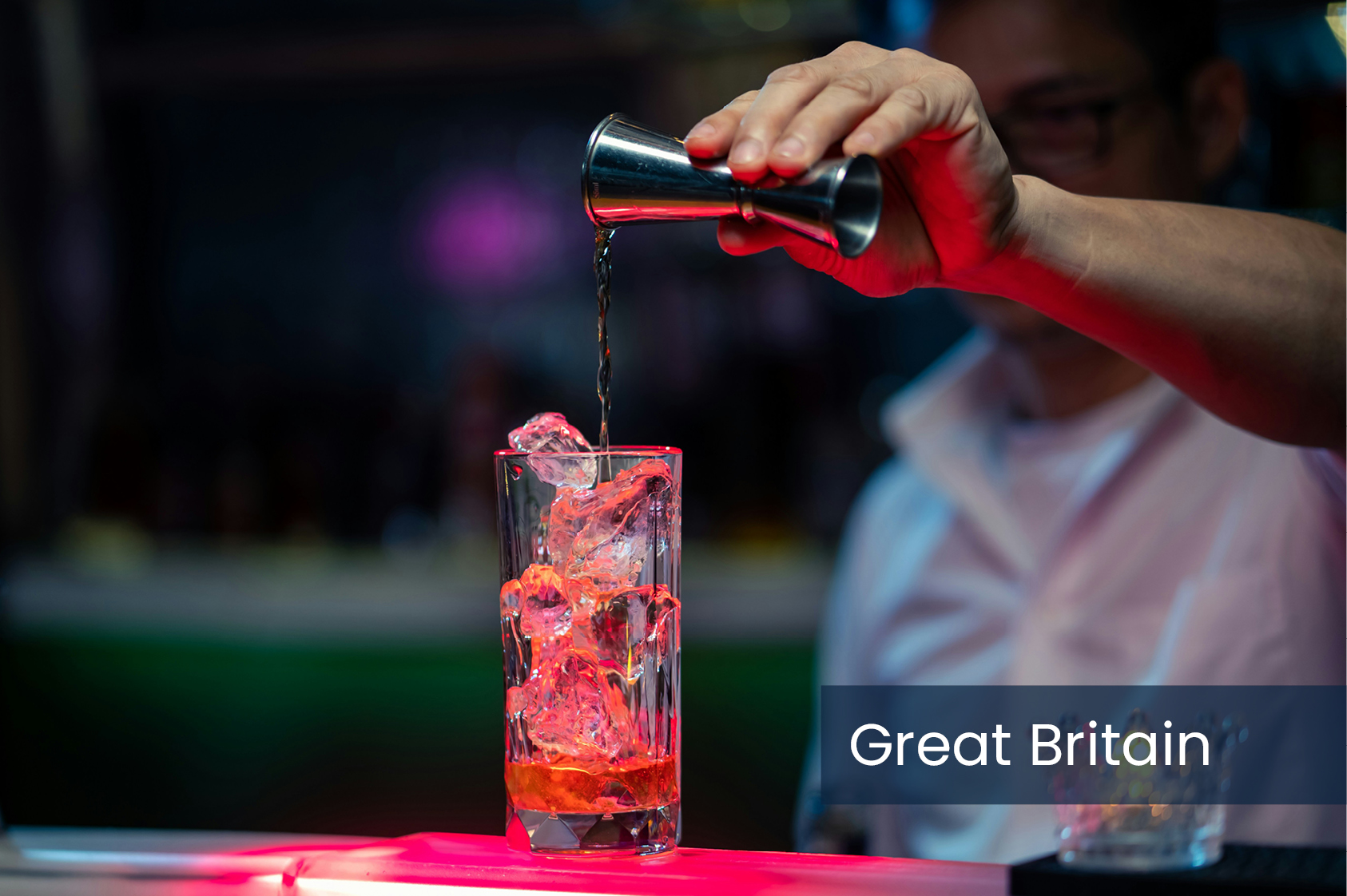However, CGA by NIQ’s research reveals there are still sizeable opportunities for growth if suppliers and venues can adjust to consumers’ evolving habits. The cost-of-living crisis and changes in occasionality—including a move away from late-night periods to earlier and more food-led visits that are traditionally dominated by beer and wine—have both squeezed spending on spirits.
They have also altered perceptions of value in the spirits category by comparison to longer serves that have advantages of price and sessionability. CGA’s REACH survey indicates that well over a third (38%) of consumers in Britain think good value is even more important to them than it was a year ago. This works against spirits, which place only fifth on consumers’ rankings of value-for-money categories—well behind options like beer and cider that are perceived to offer greater value. However, drinkers—especially younger adults—continue to see good value for money in cocktails, thanks to innovation in serve and the creation of excitement.
While evolution in habits and occasions have put the spirits category under strain, there is solid potential for growth if suppliers and venues can prove their relevance to consumers’ changing lifestyles.
Here are five insights from CGA’s expert research to help brands bounce back.
1 Segment hotspots
Some spirits have been hit harder than others by the cost-of-living crisis. For example, year-on-year sales of gin and vodka have slipped by 20.2% and 14.6% respectively over the latest quarter. But there has been more resilience in segments like tequila, where sales have dropped only 7.8%. Rum (down 11.2%) has also outperformed the market, with spiced brands faring best.
2 Entry price points
A comparison of entry standard price points highlights why consumers think they may get better value in longer serves. The average of £6.32 for a standard gin and mixer is 7.7% higher than a glass of wine (£5.87), and 32.8% above a standard pint of beer (£4.76). Partly for this reason, the number of consumers typically drinking spirits with mixers in the On Premise has fallen 11 percentage points to 21% in the last year, while those choosing beer have fallen only 3 percentage points to 40%.
3 All-round value
However, while price is crucial, It’s also important to remember that good value doesn’t necessarily mean cheap. Asked about their perception of value, there are more who say it’s something that’s worth the cost (42%) or good quality (40%) than those who think it’s a good deal (39%). Price isn’t always the deciding factor—other factors like quality, serve and all-round experience are vital too.
4 The right range
Polarisation in On Premise spending has broadened the range of consumers’ needs from venue to venue. This means brand owners have to collaborate with operators to ensure that their range caters for the profiles of specific bars, pubs and clubs. While spirits range has becoming increasingly premiumised in recent years, there is still a clear need for options suited to consumers who are feeling the pinch. Pricing ladders that differentiate between these varied needs are crucial.
5 Earlier dayparts
Spirits have long been associated with high tempo occasions, but since COVID there has been a significant shift towards earlier dayparts, where competition with other categories is usually tougher. Asked about their preferred time for happy hours, more people choose 6 to 7pm (16%) and 7 to 8pm (19%) than later slots like 8 to 9pm (14%). These periods are particularly important for reaching younger age groups, who are more likely than average to buy spirits.
Phillip Montgomery, CGA Client Services Director UK & Ireland, said: “There’s no doubt that spirits have been by far the toughest category of 2024 in the On Premise, with big consumer trends like cost focus, earlier visits and moderation all damaging it. Value perceptions are more important than ever, and suppliers and venues urgently need to find ways to change them to stop the leaking of share to beer, wine and cocktails. Range and pricing ladders need to appeal to consumers who are feeling the pinch, and improving serves is a quick and easy way to add value. By understanding people’s changing needs, suppliers can navigate this tricky landscape and craft consumer strategies that attract people back to spirits from other categories.”
CGA by NIQ’s On Premise Measurement service delivers many more actionable insights into sales trends across the spirits category, while REACH research provides in-depth analysis of consumers’ changing engagement with the category and On Premise. To learn more about the solutions and analysis tailored to individual brands, contact Phillip Montgomery here.



 Phillip Montgomery, CGA Client Services Director UK & Ireland, said: “There’s no doubt that spirits have been by far the toughest category of 2024 in the On Premise, with big consumer trends like cost focus, earlier visits and moderation all damaging it. Value perceptions are more important than ever, and suppliers and venues urgently need to find ways to change them to stop the leaking of share to beer, wine and cocktails. Range and pricing ladders need to appeal to consumers who are feeling the pinch, and improving serves is a quick and easy way to add value. By understanding people’s changing needs, suppliers can navigate this tricky landscape and craft consumer strategies that attract people back to spirits from other categories.”
Phillip Montgomery, CGA Client Services Director UK & Ireland, said: “There’s no doubt that spirits have been by far the toughest category of 2024 in the On Premise, with big consumer trends like cost focus, earlier visits and moderation all damaging it. Value perceptions are more important than ever, and suppliers and venues urgently need to find ways to change them to stop the leaking of share to beer, wine and cocktails. Range and pricing ladders need to appeal to consumers who are feeling the pinch, and improving serves is a quick and easy way to add value. By understanding people’s changing needs, suppliers can navigate this tricky landscape and craft consumer strategies that attract people back to spirits from other categories.”